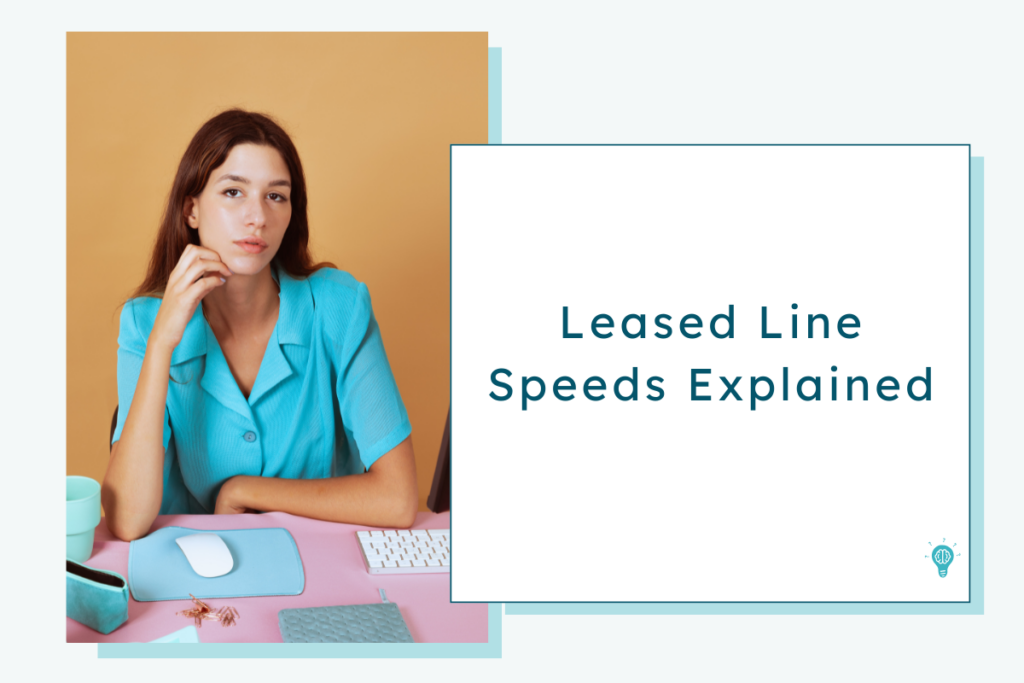
With leased line speeds ranging from 10Mbps to 10Gbps, how do you determine what’s best for your business? In today’s guide, we will break down leased line speeds, their use cases, and how to choose the right bandwidth for your needs.
What Is a Leased Line?
A leased line is a dedicated, private internet connection used exclusively by a single business – you don’t share this connection with any other business so you enjoy all of the benefits like:
✔ Symmetrical speeds – Equal upload & download speeds.
✔ Guaranteed performance – 99.99% uptime backed by an SLA.
✔ Ultra-low latency
✔ Scalability – Speeds can be increased as your business needs grow.
Soi f you need fast, reliable internet for cloud-based services, remote work, and large data transfers, leased lines could be a good option.
Leased Line Speed Options & Their Best Use Cases
Leased line speeds range from 10Mbps to 10Gbps, and the right choice depends on business size, usage, and scalability needs.
| Leased Line Speed | Best For | Example Use Cases |
|---|---|---|
| 10Mbps – 50Mbps | Small businesses, basic online tasks | Emails, web browsing, VoIP calls |
| 100Mbps | SMEs with moderate cloud usage | Video conferencing, CRM software |
| 500Mbps – 1Gbps | Large businesses, high data demand | Cloud hosting, multiple remote workers |
| 2Gbps – 10Gbps | Enterprises, data-intensive industries | AI applications, big data, live streaming |
How to Choose the Right Leased Line Speed
How many devices do you have?
- 10-50Mbps is ideal for 1-10 users handling basic tasks.
- 100Mbps supports 10-50 users running cloud applications & video conferencing.
- 500Mbps+ is best for 100+ users with high data consumption.
As a general rule, allocate 10Mbps per user for optimal performance.
What online activities do you partake in?
| Activity | Recommended Speed |
| Emails, browsing, VoIP | 10-50Mbps |
| Cloud computing, CRM software | 100Mbps |
| HD video conferencing, large file transfers | 500Mbps – 1Gbps |
| Big data processing, AI applications | 2Gbps – 10Gbps |
Do you need to scale your business?
Start with 100Mbps and scale up as the business grows, but always plan for future needs—choosing a speed too low may require costly upgrades later.
Remember that a 1Gbps leased line is the best long-term investment for fast-growing businesses.
Comparing Leased Line Speeds to Business
| Feature | Leased Line | Business Broadband |
| Speed | Up to 10Gbps | Varies (up to 1Gbps, but shared) |
| Bandwidth | Dedicated (uncontended) | Shared with other users |
| Upload & Download | Symmetrical | Asymmetrical |
| Reliability | 99.99% uptime guarantee | Prone to congestion |
| Latency | Ultra-low | Higher, may affect VoIP & video calls |
How Much Does a Leased Line Cost?
Pricing depends on speed, location, and contract length. Below is an estimated cost breakdown:
| Leased Line Speed | Estimated Monthly Cost |
| 10Mbps | £150 – £250 |
| 100Mbps | £250 – £450 |
| 1Gbps | £450 – £1,200+ |
| 10Gbps | £1,500 – £5,000+ |
Is a Higher-Speed Leased Line Worth It?
We think that a higher-speed leased line is ideal if your business:
✔ Uses VoIP, cloud computing, and video conferencing daily.
✔ you require low-latency connections for real-time data access.
✔ You handle large file transfers, backups, and security monitoring.
✔ You have big plans for future growth and wants a scalable internet solution.
Read more of our articles here:
| Leased Line Costs |
| Leased Line or Business Broadband? |
| Leased Line Providers |
| What is a Leased Line? |
